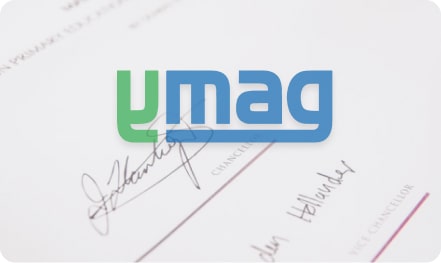The pandemic and its consequences on working life—the massive rise of remote working, videoconferencing, constraints on business travel—have prompted companies to accelerate their transition to digital technology, including by adopting electronic signature systems. How does this affect the human resources department?
In 2021, the market for HR information systems in France reached €3.4 billion (growth of over 8%). In 2022, that trend continued with a further 8% growth. By 2025, HR IS is expected to reach a total business volume of €4.6 billion. (source: Markess)
As the transition towards digital technology is one of the three major priorities for HR departments, the electronic signature is gradually becoming an essential tool for making all human resources processes paperless.
Adopting the e-signature is a simple way to streamline the process of sending documents back and forth, save time, make documents more secure, and at the same time put people back at the heart of the HR role and transform the company’s image.
In this article, we delve into the benefits of adopting the electronic signature for HR departments.
Accelerating HR processes with electronic signatures
This comes as no surprise: transitioning from paper to digital speeds up the process of sending documents back and forth and saves time. This is one of the characteristics of the e-signature.
But using electronic signatures goes further than that by digitizing important processes, such as drawing up contracts, or approving documents related to employees’ working lives.
The digital signature can be applied to any document managed by the human resources department:
- Recruiting and integrating new hires: letters of intention to hire, temporary and permanent contracts, confidentiality agreements;
- Working life: payslips, time sheets, expense reports, equipment delivery slips, annual employee reviews, sign-in sheets, contractual amendments, accounts settlements, employment certificates;
- In-house communication: corporate policies, employee information documents, notifications to attend, meeting reports, etc.
Using e-signature technology reduces the time spent contacting the recipients, sending documents and getting them signed, even in the case of confidential and/or consequential documents.
The parties whose signatures are required—whether existing or prospective employees—no longer need to come to the office in person or go through the time-consuming process of downloading, printing, and sending back a contract.
They can also sign on the go, using their smartphone or tablet device to submit their signature. This allows the HR department to ensure that a particular document has been received and read by an employee who is traveling abroad or working remotely.
Some e-signature technologies go even further by offering the possibility of signing a document while offline, the signed document is then sent as soon as the device is reconnected to the Internet. That feature is called the offline electronic signature.
Ensure the security of your electronically signed documents
In addition to saving time by speeding up the process, e-signatures also make documents more secure. This is an essential point for the HR department considering the sensitivity of certain documents.
E-signed documents are more secure because the electronic signature is not just a scanned version of a handwritten signature, it is also a way to authenticate the identity of the signatories and ensure the integrity of the document.
To fully understand these two points, we need to go into the details of how the electronic signature works.
The e-signature is unique to an individual and protected by a digital certificate that seals the document at the time of signing, so that an indelible “fingerprint” is embedded in the document.
Not only is the identity of the person signing validated by the existence of the certificate, but also that digital “fingerprint” makes it possible to detect any subsequent changes made to the document, as well as any possible modifications.
Lastly, the e-signature is completely traceable, which in practical terms makes it possible, at any time, to know who signed what, and when.
As a result, while electronic signatures have the same probative value as handwritten signatures, in reality they are much more secure.
Especially since the documents and related data are stored online, on servers that are also secure…
But a note of caution: make sure that the software publisher that developed your e-signature technology hosts your data in the EU (as is the case for Oodrive Sign).
Boosting productivity (with an effective e-signature technology)
When a software system saves time without sacrificing security, it paves the way to significantly higher productivity. This is the case for human resources departments when they adopt electronic signature technology.
In a department where much of the work is administration, making administrative processes faster and more streamlined helps reduce the time dedicated to repetitive and low-added-value tasks, such as printing or scanning documents.
This is all the more true when administrative processes are automated and backed by an e-signature system.
For instance, in the case of recurring documents, it is possible to create templates, automate the sending and archiving of documents and reminders, and even add Smartfields®, which are customizable fields in contracts aimed at collecting data within the HR IS (an innovation offered by Oodrive technology).
The staff in the HR department can spend their time on higher-added-value tasks, such as recruitment or training. Furthermore, automation reduces the risk of making mistakes and losing data.
Optimizing the company’s image by adopting the electronic signature
Another significant benefit of the electronic signature to HR departments is the undeniably positive impact on the company’s image.
First, for the company’s own employees, who save time by signing documents electronically and reducing the use of paper (e.g. when submitting expense reports), which is good for employee satisfaction.
Then for future recruits, since digital signatures are a powerful way for an organization to stand out from the crowd.
Although electronic signature tools are coming into more widespread use, for now they are still not considered standard equipment for any modern office.
As a result, companies that are early adopters of e-signature technology immediately convey a modern and innovative image, and that of an organization with an ecological conscience.
Young employees are particularly sensitive to issues of that nature: a third of them consider a company’s attitude to the environment a primary criterion in choosing an employer (source : cddd).
The increasingly important place occupied by electronic signatures in human resources should come as no surprise: many HR departments praise the “efficiency and speed” made possible by digitized and paperless HR processes, as well as the “validity” and “legal enforceability” of e-signatures.
Due to its advantages in terms of security, time saving, productivity, and brand image, digital signature technology is steadily gaining ground. All these reasons make e-signatures a must-have tool for any human resources department!








